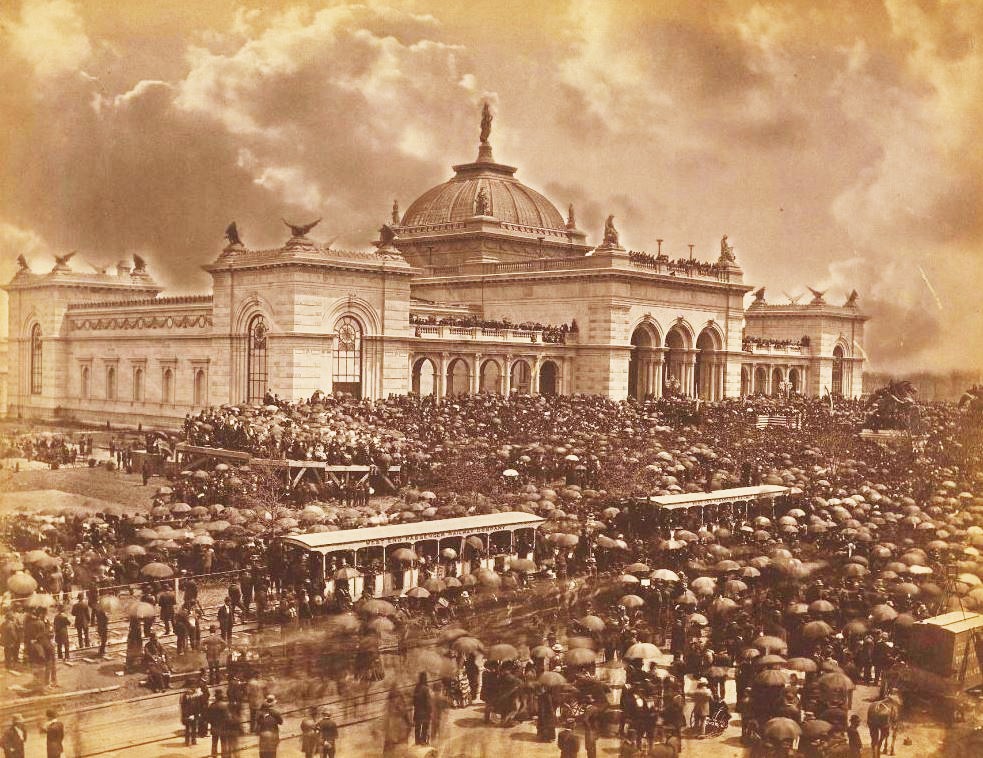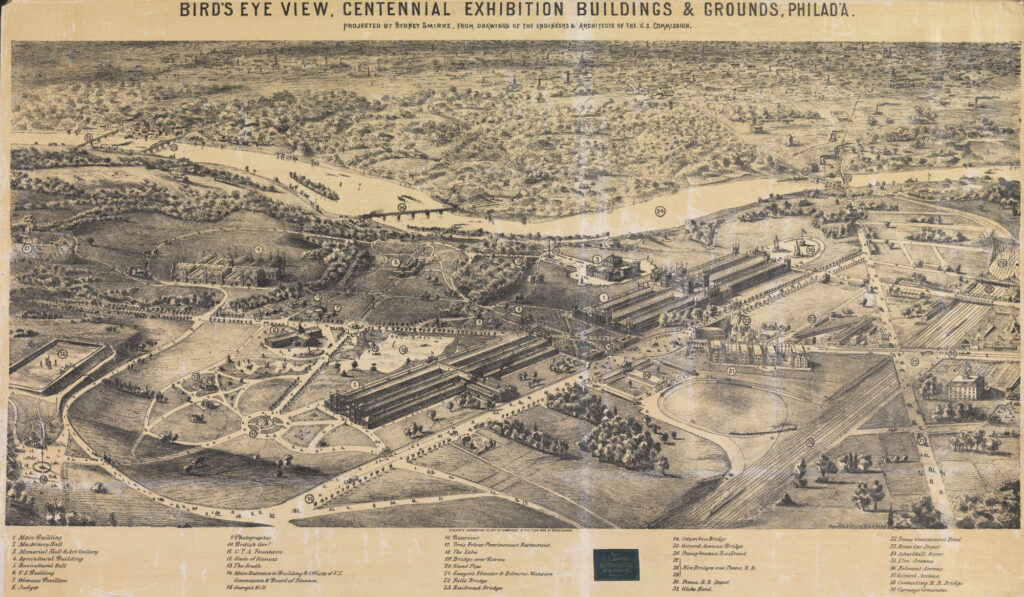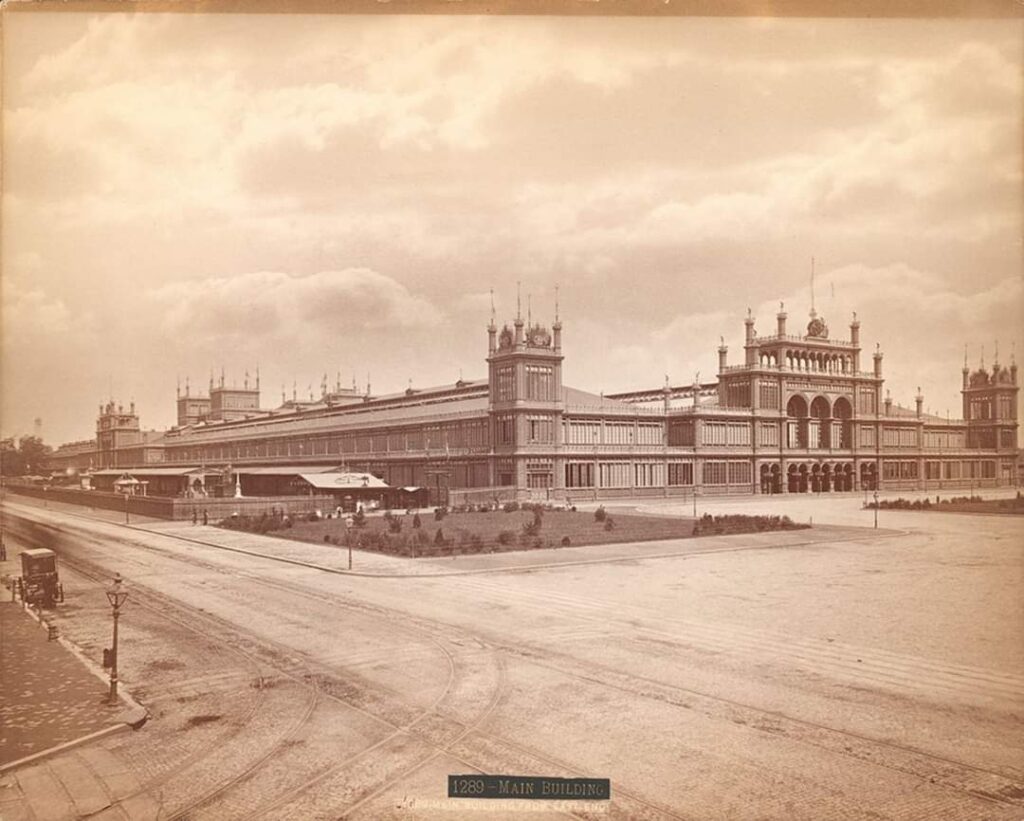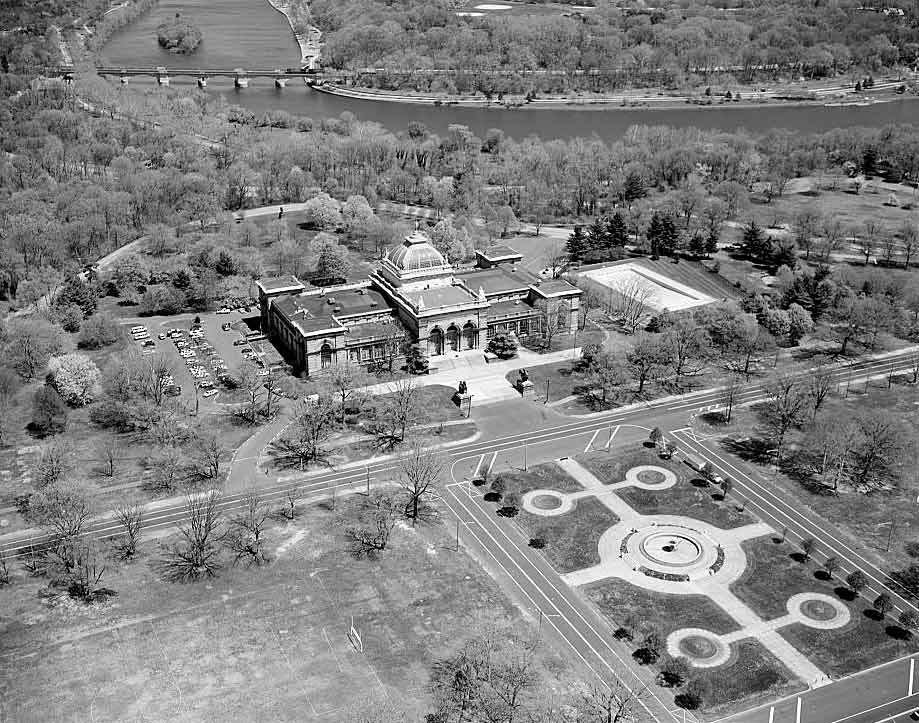1876 Centennial Exposition in Philadelphia
In the spring of 1876, the United States celebrated its 100th birthday in grand style with the 1876 Centennial Exposition in Philadelphia. This event was not just a birthday celebration; it was a showcase of the nation’s industrial achievements and a testament to its growing power. The exposition was spread across fairgrounds that covered nearly 285 acres in Philadelphia’s Fairmount Park, featuring pavilions and exhibits from around the world. For many Americans living at the time, it was the first opportunity to experience the cultural and technological marvels of the modern age.
The exposition was an ambitious project that mirrored the audacious spirit of America’s centennial anniversary. It required extensive planning, fundraising, and construction, but the results were nothing short of spectacular. The exposition opened its gates to the public on May 10, 1876, and it became a place where art, industry, and innovation intersected. Over the next six months, more than 10 million visitors would walk through its halls, marveling at the wonders within.
As visitors explored the expansive grounds, they encountered a world that seemed to encapsulate the past, present, and future. They saw machinery that defied their understanding, art that captured the beauty of the human spirit, and inventions that promised to change the world. The 1876 Centennial Exposition in Philadelphia was not just a fair; it was a reflection of a nation on the brink of a new era.
The Importance of the 1876 Centennial Exposition in Philadelphia
The 1876 Centennial Exposition was a critical moment in the United States’ journey toward becoming a global power. It demonstrated America’s capacity for innovation and its potential as a leader in industry and culture. The exposition also provided a platform for the United States to strengthen its relationships with other nations, as over 35 countries participated, bringing with them their own achievements and cultures.
This international event had a profound impact on American industry and commerce. The sharing of ideas and exposure to new technologies spurred advancements and collaborations that would fuel economic growth for years to come. It was also a celebration of American resilience, coming only a decade after the Civil War — a testament to the country’s ability to heal and rebuild.
Moreover, the exposition had a significant role in shaping the American identity. It was a moment of national pride and unity, an assertion of the United States’ place on the world stage. The fair also helped to foster a sense of patriotism and optimism about the future, leaving a lasting impression on those who experienced it.

The Main Focus of the 1876 Centennial Exposition
The 1876 Centennial Exposition focused mainly on progress — technological, industrial, and artistic. The fair was designed to display the leaps in technology that had taken place over the past century, and it did so with great fanfare. The exhibits featured breakthroughs in agriculture, mining, machinery, and transportation. Notably, the exposition highlighted the advancements in communication, with the introduction of the latest telegraph technology and Alexander Graham Bell’s telephone.
Art and culture were also significant components of the exposition. There were galleries filled with fine art, showcasing American and international artists. Additionally, the fair featured music and performances, which provided guests with a rich cultural experience. The exposition was not only about what had been achieved but also about the potential of what was to come.
The focus on education and enlightenment was clear. The organizers aimed to inform and inspire the American public, encouraging them to look forward to the possibilities of the future. The fair served as a classroom for the masses, where learning and discovery went hand in hand with entertainment.
What Happened at the 1876 Centennial Exposition in Philadelphia, Pennsylvania?
The fairgrounds of the 1876 Centennial Exposition were abuzz with activity from the opening day to its close. Attractions and exhibits from all over the world drew crowds eager to witness the latest inventions and marvel at international displays of culture and industry. The immense Corliss Steam Engine, powering much of the fair’s machinery, became an icon of the event, representing the pinnacle of industrial engineering.
Among the countless exhibits, one could find a range of innovations that would shape the course of history. From the practical, such as Heinz’s new food products, to the revolutionary, like the typewriter and the sewing machine, the exposition was a showcase of human ingenuity. The fair also displayed advancements in military technology, which included the latest firearms and naval exhibits.
The fair was not without its share of entertainment and education. Lectures, concerts, and parades were regular occurrences. The international pavilions provided visitors with a glimpse into the cultures and customs of people from around the world. The Japanese Bazaar, the Egyptian exhibit, and the Spanish Moorish Palace were among the most popular attractions, enchanting visitors with their exotic allure.

Key Figures and Exhibitions of the 1876 Centennial Exposition
The 1876 Centennial Exposition was the stage for many prominent figures of the time, whose contributions would leave an indelible mark on history. Alexander Graham Bell, for instance, introduced the world to his invention of the telephone, a device that would revolutionize communication. Thomas Edison, another luminary present, displayed his automatic telegraph system, further displaying the rapid advancement of technology.
On the industrial front, George Pullman showcased his luxurious Pullman Sleeping Car, which would redefine rail travel. Agriculturist John Deere presented his latest farm equipment, contributing to the modernization of agriculture. Each key figure and their exhibit played a role in shaping the future of their respective fields.
The Women’s Pavilion, another significant exhibit, highlighted the role of women in American society and their contributions to arts and sciences. This space, managed entirely by women, was revolutionary for its time and indicated the burgeoning women’s movement.
Impact of the 1876 Centennial Exposition on American Society
The impact of the 1876 Centennial Exposition on American society was profound and far-reaching. It ignited a wave of technological and industrial innovation that would lead to the Second Industrial Revolution. Many of the inventions and products displayed at the exposition would become part of everyday life, altering the way Americans lived and worked.
The exposition also had a substantial cultural impact. It introduced Americans to a wider world, fostering a greater appreciation for international cultures and goods. This increased exposure to global influences would shape American tastes and consumption for generations.
Moreover, the 1876 Centennial Exposition had a democratizing effect. It was an event for the masses, accessible to people from different social classes, backgrounds, and regions of the country. It offered a shared experience that transcended social divides and contributed to a sense of national community and identity.
Modern Interpretations and Legacy of the 1876 Centennial Exposition
Today, the 1876 Centennial Exposition is seen as a pivotal moment in American history. It is recognized for its role in signaling the United States’ emergence as a world leader in industry and innovation. The exposition is often cited in discussions about the American Dream and the belief in progress and opportunity.
The legacy of the exposition is evident in modern world fairs and expositions, which continue to celebrate human achievement and foster international cooperation. The spirit of the 1876 Centennial Exposition lives on in these events, as they strive to showcase the best of humanity and inspire future generations.
Additionally, the exposition is a subject of interest for historians and scholars who study the evolution of American society and culture. Its influence on architecture, commerce, and public engagement offers valuable insights into the transformative power of such events.
Visiting the Site of the 1876 Centennial Exposition Today
The site of the 1876 Centennial Exposition, Philadelphia’s Fairmount Park, remains a place of historical significance. While many of the original buildings and structures from the exposition no longer exist, a few have been preserved, such as the Memorial Hall, which now houses the Please Touch Museum, a children’s museum that embodies the educational spirit of the exposition.
Visitors to Fairmount Park can explore the grounds and imagine the splendor of the 1876 Centennial Exposition. Historical markers and installations provide context and information about the event and its legacy. The park itself is a testament to the exposition’s lasting impact on the urban landscape and public spaces.
For those interested in delving deeper into the history of the exposition, the park’s visitor center offers resources and guided tours. The nearby Philadelphia Museum of Art and the Pennsylvania Academy of the Fine Arts also have collections and exhibits related to the 1876 Centennial Exposition.

The 1876 Centennial Exposition in the Context of American History
In the grand narrative of American history, the 1876 Centennial Exposition stands as a symbol of the nation’s centennial jubilee and its ascension on the world stage. It encapsulates a period of rapid change, optimism, and ambition. The exposition represents the American ethos of progress and the belief in the transformative power of innovation and hard work.
The event also reflects the complexities of the era, including the challenges of Reconstruction and the struggles for social justice that were ongoing at the time. While it celebrated American progress, it also highlighted the disparities and contradictions within society. The exposition’s place in history is multifaceted, offering a window into the aspirations and realities of the United States in the late 19th century.
As a milestone in American history, the 1876 Centennial Exposition serves as a touchstone for understanding the development of the nation’s culture, economy, and global influence. It is a chapter that continues to inform and inspire the American story.
Today, the exposition’s influence can be seen in the ongoing pursuit of innovation and the continued appreciation for cultural exchange. It remains a powerful reminder of the collective potential to create, to advance, and to celebrate human endeavor.
For those intrigued by this historic milestone, a visit to the site in Philadelphia offers a chance to connect with the past and to appreciate the lasting contributions of the 1876 Centennial Exposition. It is a place where one can ponder the exposition’s significance and its role in shaping the America we know today.
